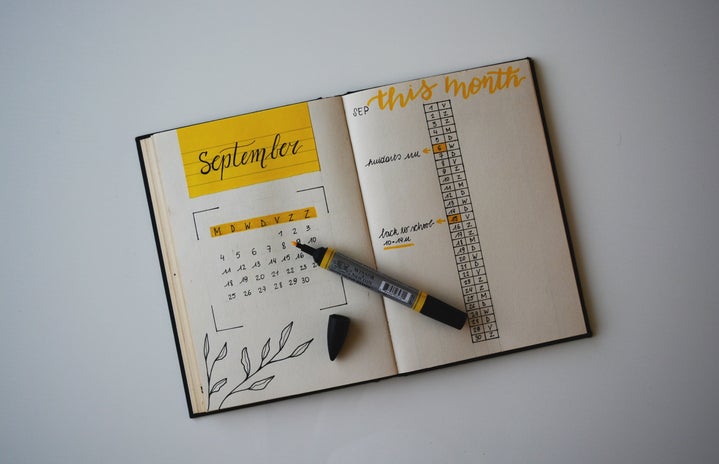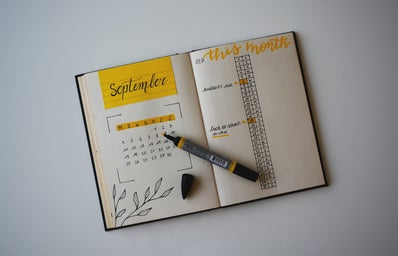Since my first year of university, I have been documenting and organising my life via the medium of the bullet Journal. I have bought so many books, pens, pencils and random accessories that I feel as though I have the experience to make sure you are starting your journal with your best foot forward.
The Book
In order to start a Bullet Journal, you obviously need a journal, or notebook, to begin the process. In theory, you can use any type of notebook you like, from an expensive leather handbound book to a jotter you would use in school. However, I have found a nice hardback book, with either plain or dotted pages (If you have trouble drawing straight lines choose the dotted!) is the best option, both for the aesthetic and durability. Below are my favourite options for a bullet journal notebook.
The expensive option: Archer & Olive A5 Dot Grid Notebook (approx. £36)
The middle of the road: Leuchtturm1917 A5 Notebook, 251 pages (£16.95)
The value option: Amazon Dotted Journal (£9.25), BUT if you are trying to stay away from Amazon (which is understood) you should check out your local Flying Tiger as they often do dotted and plain notebooks for only a few pounds. The book I am using for 2021 was £1 from Flying Tiger and I absolutely love it!
The Pens
Much like with the notebook, all you really need to start a bullet journal is something to write with: a pencil, pen or even a 10p crayon could work. However, again it can be nice, when you can, to splurge out on some new and nicer materials. It is important however to think about what your paper can handle.
My favourite writing pens in my Journal are the Faber Castell Pitt Pens (£22.95), you get up to 8 in a pack and are truly anything you could ever need and more, plus they have very durable tips and they last forever. They are definitely a good choice!
I love the Zebra Mild Liner to add some colour to my journal, but they can be difficult to find and are quite expensive, so if you don’t want to wait or spend a lot of money I would recommend the Crayola Super tips .
It is also important to note that a pencil and eraser might also be a good shout so you can sketch out all your ideas before having to commit to any designs.
The extras
There are a million and one different things you could purchase to make your journal uniquely yours. You can be as extravagant as you want, but If you are starting from scratch, and don’t want to break the bank, I would suggest a few simple additions to add a little colour and excitement to the notebook.
-
Washi tape: This paper-like tape comes in every size, colour and pattern that you could ever desire. You can purchase this stuff from any decent stationary shop or website, with a few of my favourites being found on Etsy here.
-
Stickers: When personalising your journal, stickers can be one of the easiest and most affordable ways as you can get almost any design, pattern, or aesthetic emblazoned on a sticker.
-
Junk journal supplies: If you are looking to be more adventurous with your journal, I would recommend looking into supplies tailored to art or junk journaling for some inspiration. Throughout the years I have chosen to use my bullet journal for more than an organisation tool, but that of a gratitude and healing journal, all of which has encompassed more freeing and creative pages being created.
The Setup
As a bullet journal is so individual that you can really set it up however you like, but their area few pages, also known as spreads, that are very useful. These include, and index and cover page, a future log where you can note big events of the year as well as habit trackers and budgeting notes. I choose too, at the start of the month, fill out my journal with space to write out and plan my whole month at one, but you may choose to do so weekly, or even daily depending on your schedule and creative capacity. You should do what is best for you!
In the original bullet journal set up, creating a key to discern between major events, tasks to complete, birthdays etc. is very common and is a great way to start your journey into bullet journaling as it makes your job of organisation much easier. However, do not feel the need to use one if you don’t feel it is necessary, I have never used an index for example, despite the fact that they are widely used by other Bullet Journalers.
To go into detail of every page and the ways in which you could structure it would take far too long and be far too boring but if you want to know the basics, you can watch them here, here and here.
Happy Journaling!


